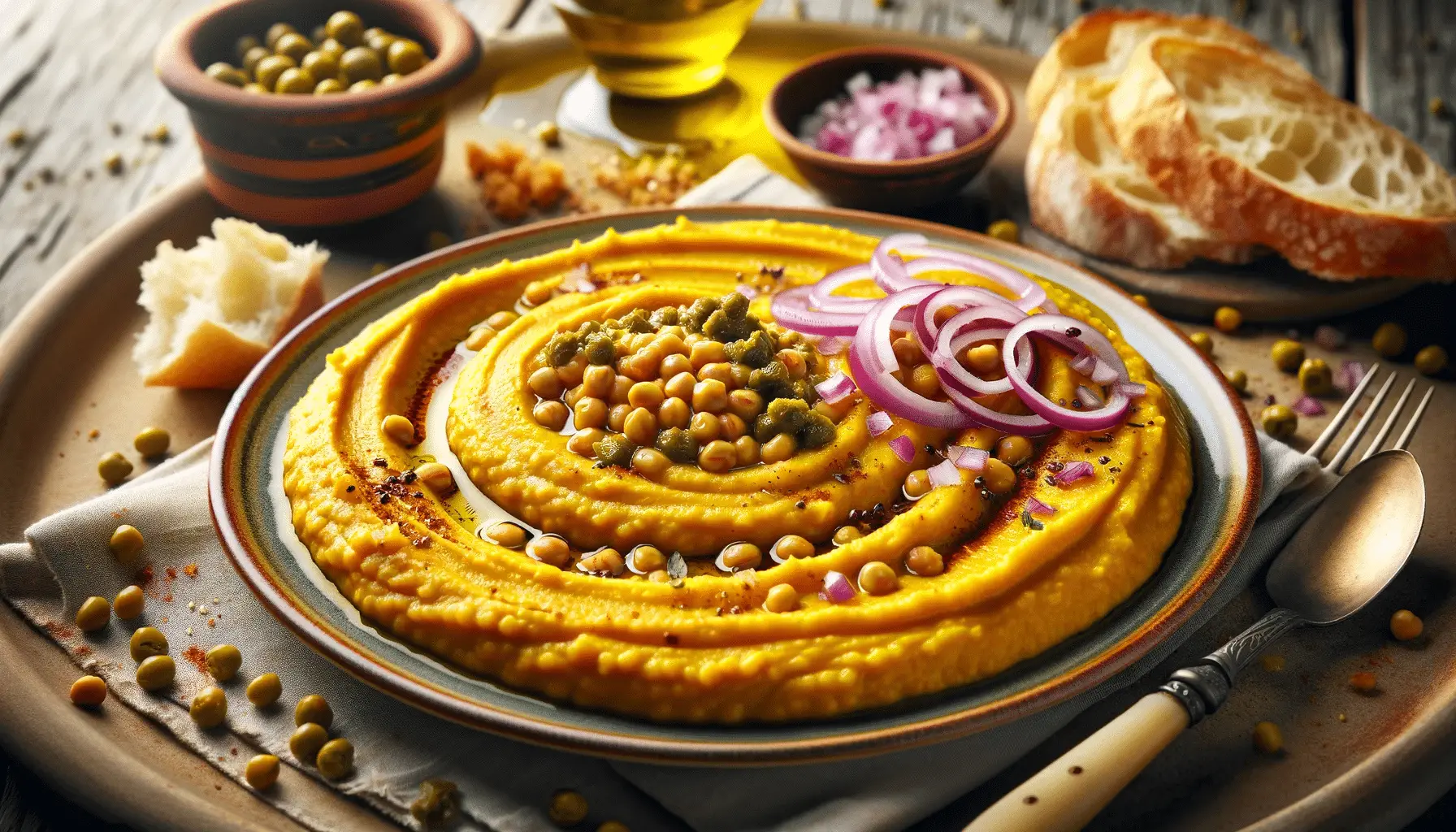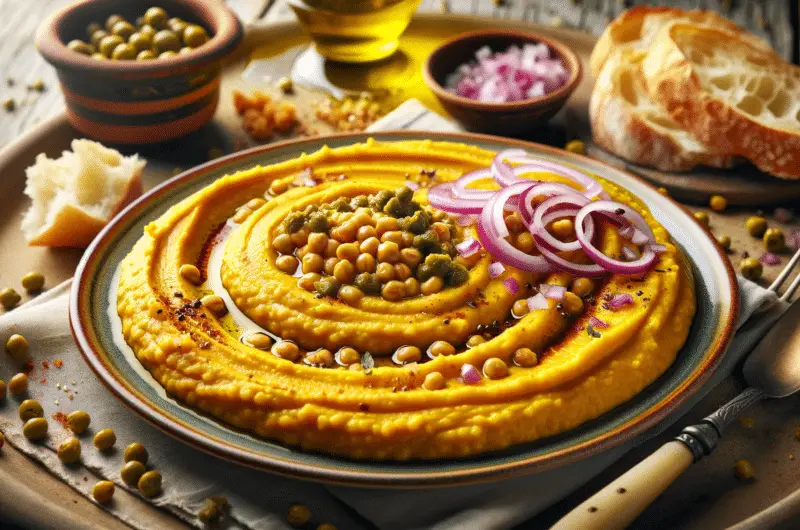Greek Fava, a staple in Mediterranean cuisine, is a delightful dish known for its creamy texture and rich flavor. This puree, made from yellow split peas, is not only delicious but also packed with nutrients. Ideal for health-conscious foodies, Greek Fava offers a perfect blend of taste and nutrition.
- Garnishing Options: For a more visually appealing and flavorful dish, consider garnishing your Fava with additional ingredients. Some popular choices include:
- Extra-virgin olive oil drizzled on top.
- A sprinkle of fresh herbs like dill, mint, or more parsley.
- Red onion or scallions, finely chopped, for a sharp, fresh bite.
- Capers or olives, which add a nice briny contrast.
- Crumbled feta cheese for a creamy, tangy addition.
- Serving Suggestions: Fava can be served in various ways, adapting to different meal types:
- As an appetizer or meze, served with warm pita bread or crusty loaf.
- Accompanying grilled meats or fish as a side.
- As part of a vegetarian meal, it pairs well with other legumes, salads, and roasted vegetables.
- Storage: Fava stores well in the refrigerator. Place it in an airtight container, and it can last for up to 5 days. It can also be frozen for longer storage, though this may slightly alter the texture.
- Reheating: When reheating, you may need to add a little water or olive oil to bring back its creamy consistency. Gently warm it on the stove or in a microwave.
This Fava recipe is not just a culinary delight but also a journey into traditional Mediterranean cuisine. Its simplicity, combined with the depth of flavors, makes it a versatile dish suitable for various occasions. Whether as a wholesome meal on its own or as part of a larger feast, it’s sure to be a hit with family and friends. Enjoy your culinary adventure with this timeless recipe!
Selecting the Perfect Ingredients for Greek Fava
The key to a great Greek Fava lies in choosing high-quality yellow split peas. These peas, when cooked correctly, yield a smooth and creamy texture. Alongside, fresh ingredients like onions, garlic, and olive oil enhance the flavor profile, making every bite a culinary delight.
Step-by-Step Cooking Process: Achieving the Perfect Texture
Cooking Greek Fava requires patience and precision. Start by simmering the split peas until tender. Then, blend them into a puree, adding in sautéed onions and garlic for extra flavor. The secret to the perfect texture lies in the blending process – it should be creamy yet retain a bit of texture.
The Art of Seasoning: Bringing Flavors to Life
Seasoning is crucial in Greek Fava. A pinch of salt, a dash of lemon juice, and a drizzle of high-quality olive oil can elevate the dish. These simple additions bring out the natural flavors of the yellow split peas, creating a harmonious balance on the palate.
What to serve with Fava?
Serving dishes with fava beans can be quite versatile, depending on whether they are the main ingredient or a side. Here are some suggestions:
- Grilled or Roasted Vegetables: Fava beans pair well with grilled or roasted vegetables like bell peppers, zucchini, and eggplant. The charred, smoky flavor complements the earthiness of the beans.
- Rice or Quinoa: Serve fava beans alongside a fluffy bed of rice or quinoa. This combination makes for a filling and nutritious meal.
- Lamb or Chicken: Fava beans are often used in Mediterranean and Middle Eastern cuisines, where they are typically paired with lamb or chicken. The richness of the meat balances the lightness of the beans.
- Fresh Salad: A fresh green salad with a light vinaigrette dressing can be a great side for a fava bean dish. The crispness of the salad contrasts nicely with the creamy texture of the beans.
- Bread or Pita: Serving fava beans with a side of warm bread or pita is perfect for scooping up the beans. This is especially good if the fava beans are prepared as a dip or spread.
- Herbed Couscous: Couscous, especially when flavored with herbs like parsley or mint, can be a delightful accompaniment to fava beans.
- Pasta: Fava beans can be added to pasta dishes or served alongside them. They add a nice texture and nutritional boost to pasta meals.
- Seafood: Seafood, particularly lighter fish or shrimp, can complement the flavor of fava beans quite well.
Remember, the key is to balance flavors and textures. Fava beans have a unique, slightly nutty flavor and a creamy texture, so they pair well with a variety of foods.
Health Benefits: A Nutritious Addition to Your Diet
Rich in protein and fiber, Greek Fava is a nutritious addition to any meal. It’s low in fat, making it a heart-healthy choice. Plus, its high fiber content aids in digestion, making it a beneficial dish for those looking to maintain a healthy lifestyle.
Conclusion: Embracing the Flavors of the Mediterranean
In conclusion, Greek Fava is more than just a dish; it’s a celebration of Mediterranean flavors. Its simplicity, coupled with its rich taste and health benefits, makes it a must-try for anyone looking to explore the wonders of Greek cuisine.

